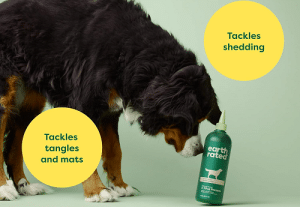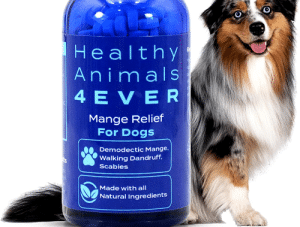Does dog hair grow back after shaving? Summer season comes with intense heat and sun, and most of us are removed from our underclothing till we put on our shorts or swimwear. If less is much more for us as the temperature spikes, isn’t it good for our pet dogs too?
While shaving your canine or feline when the summer season comes might appear like a negative concept, does it truly help keep your pet cooler? In general, most experts discourage cutting most animals, although there are exceptions. Veterinarians commonly discourage shaving cats and pets for one straightforward reason: Your animal’s fur is not the same as your own.
- ” Should I trim my pet dog’s hair?”
- ” Will pet dog hair grow back after cutting?”
These are the inquiries that a lot of new pet dog proprietors have. For those who are brand-new to pets, some points can be complicated. Here I have talked about every little thing you require to know about reducing and also cutting dogs.
Related articles:
How to treat mosquito bites on dogs?
Contents
Does Dog Hair Grow Back After Shaving?
What You Need to Know Before Shaving Your Dog
Have you ever thought about cutting your pet for the summer season? I shaved my pet dog years back under the presumption that it would help keep him cool; however, unfortunately, it had the opposite impact. What I didn’t recognize then was that the sort of layer your canine has is what determines whether or not they need to be shaved.
Before you decide to cut your pet dog this summer, please remember this: double-coated dogs should not be cut. Cutting a dual-layered dog will certainly not assist in maintaining his cool down; it will simply make things even worse.
Solitary layered types (such as Poodles) can have their hair clipped or shaved to the skin, and it will certainly expand back the way it was, but that’s not the situation for double-coated types.
Before you choose to shave your canine this summer, please read this post first. I shaved my pet years ago, and it’s a blunder I’ll never forget. Not all canines ought to be shaved, and I found that out by hand.
Should I Completely Shave My Dog?
- The simple solution is NO (for double-coated pet dog owners).
- You may be preparing to shave your pet for the summer. Just like various other dog proprietors, your thought should be, shaving will certainly make the pet cool.
- But, this isn’t real.
- Cutting will not make your pet cool. By completely shedding off, your pet will be shedding its layers. It will certainly minimize the natural abilities of your pet dog to cool down.
- For double-coated pet types, it is not suggested to shave. Dual-layered canine breeds have 2 layers of hair for protection from the environment.
- It will certainly not just reduce the natural abilities, but it will also lead to modifications in the appearance of coats, and it may also irritate the canine.
Why should double-coated pets not be shaved?
When determining whether or not to cut your pet, you need to identify what type of layer your canine has– single or double.
Double-covered breeds are those that have two layers of fur. The top layer is made from challenging guard hairs, and the bottom layer is a thick layer of hair called an undercoat. The undercoat is a layer of great hairs near animals’ skin that helps keep them cool in the summer and also warm in the winter months. In the spring, they experience a significant loss of duration called blowing their coat when much of that undercoat is shed to make way for their lighter summertime coat.
Typical double-layered types consist of Huskies, Chows, Labradors, German Shepherds, Golden Retrievers, and Pomeranians. A lot of the herding types have a dual-layer, as well as the Spitz-type breeds, and a majority of Terriers. Shaving a double-coated pet dog can completely damage their hair, and contrary to common belief, it does not help keep them cool in the summertime. Shaving a double-coated pet dog must only be performed in extreme cases of matting or with particular skin conditions.
Right here are some negative aspects of shaving the pet:
- Shaving can not cool down
- Changes in layers of textures
- May cause irritation
- Sunburns
- Increases skin cancer cell threats
- The fur obtained was harmed
- It will not decrease the dropping
What pet dog should not be cut?
As we have seen, double-coated pet dog types need not be cut. Doing so will certainly wreck the dog’s capacity to cool. Dog breeds that should never be cut are:
- Huskies
- Malamutes
- Golden Retrievers
- Border Collies
- Aussie Shepherds
- Shelties
- Newfoundlands
- Bernese Mountains
Individuals usually make the mistake of shaving the canine, and later they recognize that it was their largest error. If you have made the very same blunder, you should want to know does the hair grows back after cutting. Right here’s the response.
Does Dog Hair Grow Back After Shaving?
Yes, after shaving, the pet dog’s hair grows back if it is a single-coated pet dog. After shaving a double-coated canine, you can expect to see changes in the canine’s coat structure.
- It will damage the canine coat permanently, which may cause improper hair growth.
- The hair development is mainly based upon the kind of layer your canine has.
- The hair growth after shaving varies from one pet dog breed to an additional one. If you have a single-coated dog (like a poodle), then you can have your dog’s hair shaved.
- After cutting, it usually takes about 2 to 3 months for solitary-covered canines to start obtaining the correct hair growth.
- Some examples of single-coated dogs are Poodles, Shih Tzu, Maltese, Lhasa Apso, Great Dane, as well as Afghan Hounds.
Verdict
So the pet dog hair will expand back after cutting if you have a single-coated canine. Typically, it takes about 2 to 3 months for single-covered pets for hair development. If you own a double-coated pet like a Husky, Golden Retriever, Aussie Shepherd, Bernese Mountain Dog, or Malamute, I don’t recommend you shave your canine.
Doing so will certainly ruin your pet dog’s natural abilities to cool as well as layer appearances. Aside from this, there are numerous other unfavorable effects your dog will need to suffer. Visit our homepage to see more: FOR DOGS REVIEWS
See also:



